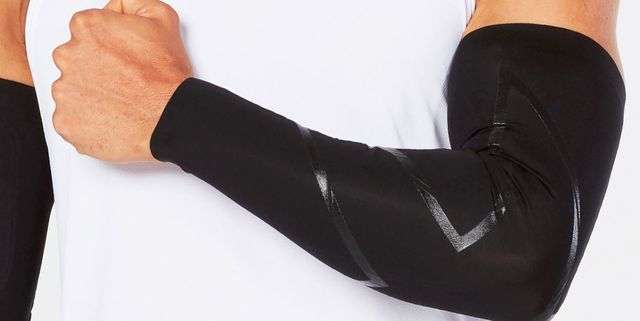
Aug 18,2025
Compression sleeves are a popular athletic accessory, widely used in both sports and daily routines. They provide a range of benefits, supporting users in athletic performance and non-sport activities for various purposes.
A compression sleeve is designed to provide gentle, consistent pressure to a specific body part, typically the arms or legs. These sleeves are made from elastic materials such as spandex, nylon, or both. Compression sleeves primarily aim to improve blood circulation and reduce swelling. Athletes like them. So do people with some medical conditions. Also, active people.
Compression sleeves work by applying graduated pressure. They use more pressure at the extremities (e.g., wrists or ankles). Then, they slowly release pressure as they move toward the body's core. This design helps promote blood flow back toward the heart, preventing blood pooling in the limbs.
Compression sleeves have graduated Compression. They provide varying pressure levels along their length. The pressure is highest at the extremities (e.g., wrists or ankles) and gradually decreases as it moves toward the body's core. This Compression helps blood flow back to the heart from the extremities. It does this by aiding venous return.
Compression sleeves apply gentle pressure to veins and superficial blood vessels, narrowing their diameter. This increases blood flow velocity, directing more oxygenated blood toward the heart and muscles. As a result, muscles and tissues receive enhanced oxygen delivery, boosting performance and reducing fatigue.
Compression sleeves can effectively manage edema (Swelling) by preventing fluid accumulation in the tissues. When pressure is applied to the limbs, it helps to push out excess fluid and prevent it from pooling in the surrounding tissues. This is especially good for people with conditions like lymphedema. It also helps after intense physical activities that may cause temporary Swelling.
Compression sleeves provide support and stabilization to the muscles and joints, which can help reduce muscle vibration and micro-injuries during physical activities. This support may help prevent muscle strain and injuries.
After exercise or physical activity, wearing compression sleeves may help with Recovery by promoting better blood flow and reducing muscle soreness. The improved circulation facilitates the removal of metabolic waste products and delivers nutrients to the muscles, promoting faster Recovery.
Compression sleeves can help regulate body temperature in some cases. For instance, they may keep the limbs warmer during cold weather or help dissipate heat and sweat during warm weather, providing added comfort during physical activities.
A compression sleeve is used when you want to improve blood circulation, manage Swelling, or support your muscles and joints. People commonly wear compression sleeves during physical activities like running, cycling, or weightlifting. Also, if you have medical conditions like lymphedema, varicose veins, or deep vein thrombosis, a doctor may prescribe a compression sleeve. It will reduce Swelling and improve fluid flow. It can help athletes improve their workouts. It can also aid those with a medical condition that needs better circulation. A compression sleeve can boost blood flow, cut swelling, and give extra support. This helps keep you comfortable and performing well. However, choosing the right size and level of Compression is essential to ensure maximum effectiveness and comfort.
Arm compression sleeves are mainly designed to provide gentle, increasing pressure. They do so from the wrist to the upper arm. These sleeves offer a range of benefits and are commonly used for various purposes, including:
Arm compression sleeves can help support the arm muscles. They do so during physical activities, like weightlifting, basketball, or tennis. The Compression helps reduce muscle vibration and micro-injuries, potentially lowering the risk of strains and fatigue.
Compression sleeves enhance blood circulation by applying pressure to the arms, promoting oxygenated blood flow to the muscles and tissues. This improved blood flow can aid in performance during exercise and facilitate faster Recovery afterward.
Wearing compression arm sleeves after intense workouts or physical activities may help alleviate muscle soreness and fatigue by removing metabolic waste products and reducing inflammation.
Some compression arm sleeves are designed with UPF (Ultraviolet Protection Factor) materials that can shield the arms from harmful UV rays, making them popular among athletes and outdoor enthusiasts seeking sun protection during their activities.
Arm compression sleeves can help people with lymphedema. This condition causes arm swelling due to poor lymph drainage. The gentle pressure of the sleeve helps reduce Swelling and promotes better fluid circulation.
Some people use compression arm sleeves to protect and support new tattoos during healing. The sleeves can help reduce irritation and protect the tattoo from external elements.
Arm compression sleeves can offer mild Compression around the elbow. They give support and may reduce discomfort from conditions like tennis elbow or arthritis.